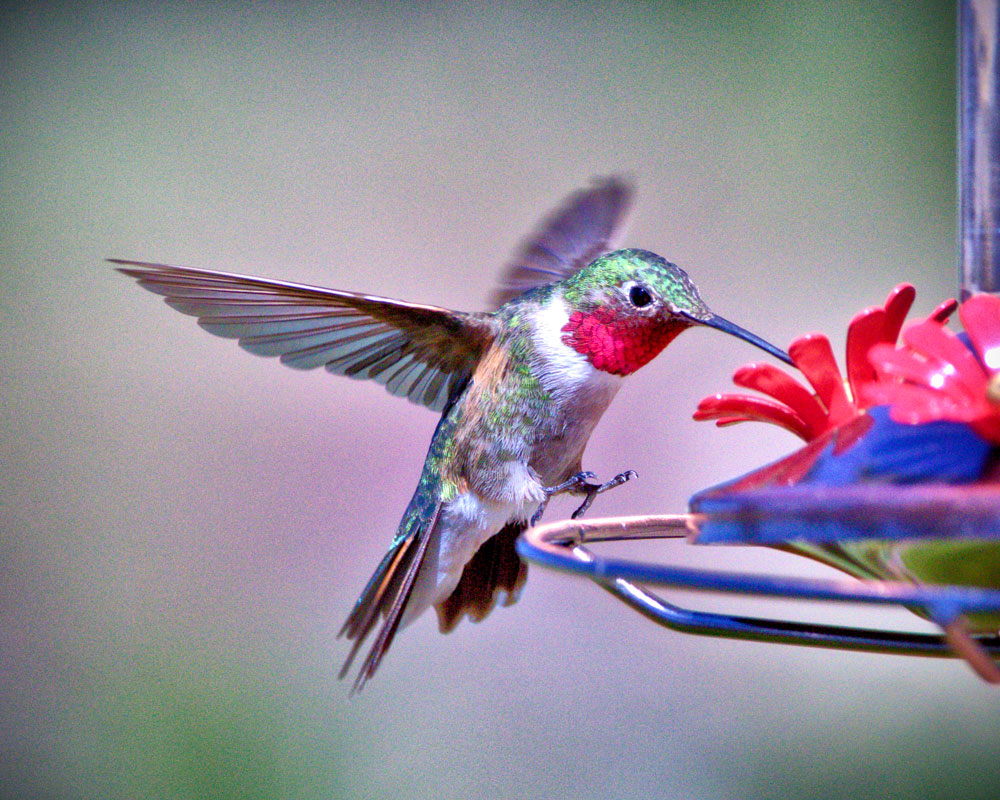Welcoming back the hummingbirds
By Lynn Zahorik; photos courtesy of Darwin Thompson and Nick Ainsworth

Broad-tailed hummingbirds are frequent visitors to Colorado flower gardens each spring. The male species is distinctively marked with a rose-magenta throat, a white breast and green and buffy flanks. They are energetic and aggressive little birds.
With the return of spring, many Coloradans look forward to welcoming back the hummingbirds that flew south for the winter.
These fascinating zippy little creatures start to command the attention of locals in mid-April. Four species of hummingbirds can be seen in Colorado. The most common is the broad-tailed hummingbird, which migrates in from central Mexico and is iridescent green in color. There’s also the rufous hummingbird, the calliope and the black-chinned hummingbirds. In general, hummingbirds are small birds, usually between 3- to 5-inches long. They have long narrow beaks used for extracting nectar from tubular flowers.
The hummingbird is the only species of bird that has the ability to hover in place, fly forward, backward, even upside down, using wings that beat up to 75 times a second. These extremely fast wingbeats make a humming sound which is what gives hummingbirds their name. The average weight of a hummingbird is less than a nickel. They have a very high metabolism and must eat all day long just to survive. They consume about half of their body weight in bugs and nectar, feeding every 10-15 minutes and visiting 1,000-2,000 flowers throughout the day.

Eli Claypool and Ayden Godina take pride in assisting in the maintenance of the hummingbird feeders in the neighborhood.
It’s no wonder people love attracting nature’s tiny acrobats to their yards to enjoy them up close. Hanging a hummingbird feeder is a popular way to invite hummingbirds to visit. A simple nectar mixture of one part sugar to four parts water is ideal and easily made at home. It is important to maintain the feeder, cleaning and changing the solution every five to seven days. When the weather heats up, the sugar water should be changed every two to three days to keep it fresh so it doesn’t ferment.
The team at Nick Ainsworth State Farm agency is eager to hang their hummingbird feeders near their office at Village Square Lane in the City of Castle Pines. This will be the second year they have welcomed the birds to the neighborhood.
“Many of us often work long days so we enjoy being greeted by the hummingbirds when we arrive at the office and then end our days having them send us off as well,” said Ainsworth. “The more feeders we put up, the more birds we were seeing. It’s been a lot of fun for me, my kids and my team. I think we all appreciate wildlife even in some of its smallest forms.”
The hummingbird season in Colorado is mid-April through late September. Hummingbirds have an innate ability to remember their favorite feeding locales. So enjoy your hummers today and hopefully you will see them again next year. To learn more about hummingbird migration, visit hummingbirdcentral.com.